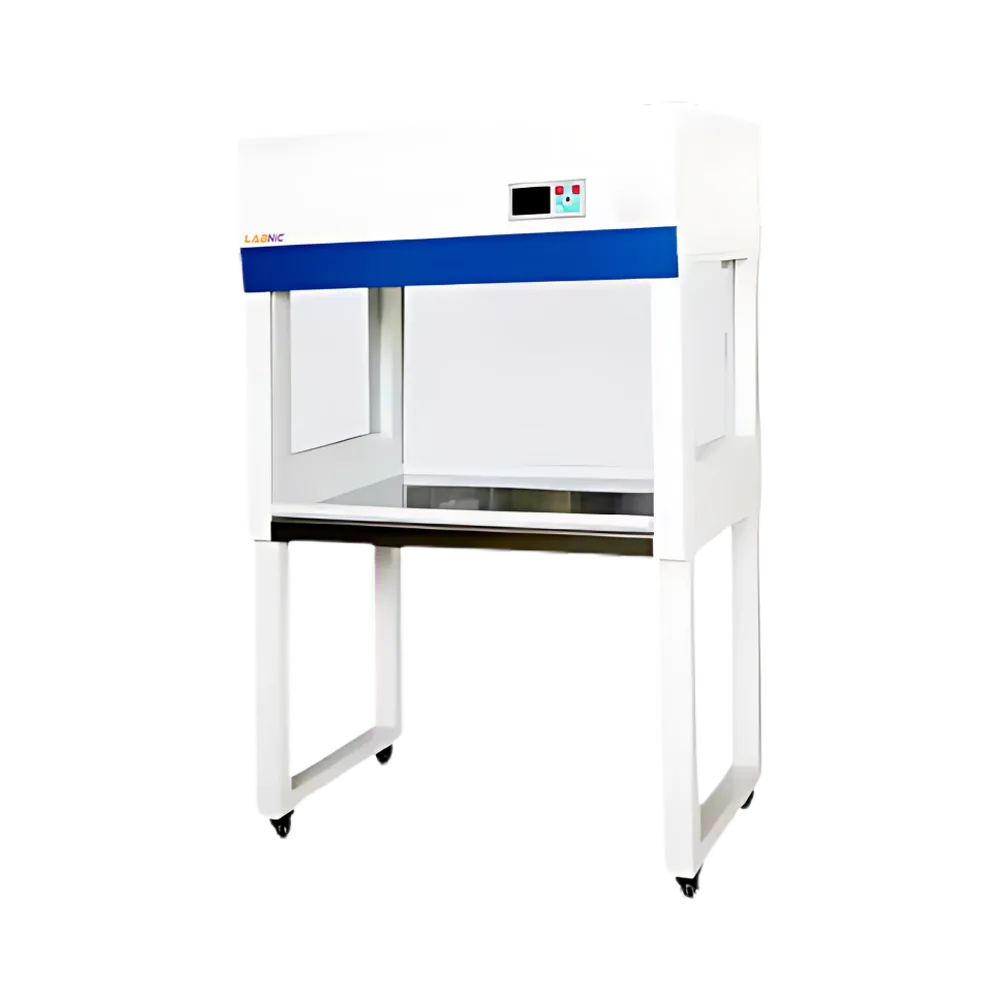
Horizontal Clean Bench LBN-HC131 uses a horizontal flow airstream with a single workspace. It combines the most recent laminar flow technology and innovation to provide proven sample and process protection. With highly efficient HEPA filters and a wind speed of 0.3 to 0.6 m/s, it achieves 99.99% efficacy. The airflow mechanics principle is used by clean air technology with centrifugal wind wheel. The arc-shaped, large-diameter inlet design reduces turbulence generated, resulting in low-noise system operation.
| Wind Speed | 0.3 to 0.6 m/s |
| Vibration Half Peak | ≤3μm(X, Y, Z direction) |
| High-Efficiency Filter | Efficiency 99.99% |
| Illumination | ≥ 300 LX |
| Noise | ≤ 62dB |
| Ambient temperature | 10 to 30℃ |
| Relative Humidity | <70% |
| Power | 440 W |
| Voltage | AC220V/50Hz |
| Internal Dimension (H×W×D) | 500 × 830 × 550 mm |
| External Dimension (H×W×D) | 1585 × 990 × 735 mm |
| Package Dimension (H×W×D) | 1030 × 1180 × 855 mm |
| Net Weight | 120 Kg |
| Gross Weight | 210 Kg |
Horizontal Clean Bench is applicable in the field of protection of biotechnology, pharmaceutical, life sciences, and precision electronic products. It creates a partial purification work environment so that experiments are conducted smoothly.
Horizontal Clean Bench is applicable in the field of protection of biotechnology, pharmaceutical, life sciences, and precision electronic products. It creates a partial purification work environment so that experiments are conducted smoothly.
Most Frequently Asked Questions
1. How does a Horizontal Clean Bench work?
Ans. It uses a high-efficiency HEPA or ULPA filter to remove airborne contaminants and directs clean air horizontally from the back toward the user, ensuring a sterile workspace.
2. Does a Horizontal Clean Bench provide user protection?
Ans. No, it only protects the sample from contamination but does not protect the user from hazardous substances.
3. What industries use Horizontal Clean Benches?
Ans. They are widely used in pharmaceutical, electronics, biotechnology, microbiology, and research laboratories where a clean, sterile environment is required.
4. How often should the HEPA filter be replaced?
Ans. The HEPA filter should be replaced every 6 to 12 months, depending on usage and air quality.
5. Can chemicals or biohazardous materials be used in a Horizontal Clean Bench?
Ans. No, it is not designed for handling toxic, hazardous, or infectious materials.
Horizontal Clean Bench LBN-HC131 uses a horizontal flow airstream with a single workspace. It combines the most recent laminar flow technology and innovation to provide proven sample and process protection. With highly efficient HEPA filters and a wind speed of 0.3 to 0.6 m/s, it achieves 99.99% efficacy. The airflow mechanics principle is used by clean air technology with centrifugal wind wheel. The arc-shaped, large-diameter inlet design reduces turbulence generated, resulting in low-noise system operation.